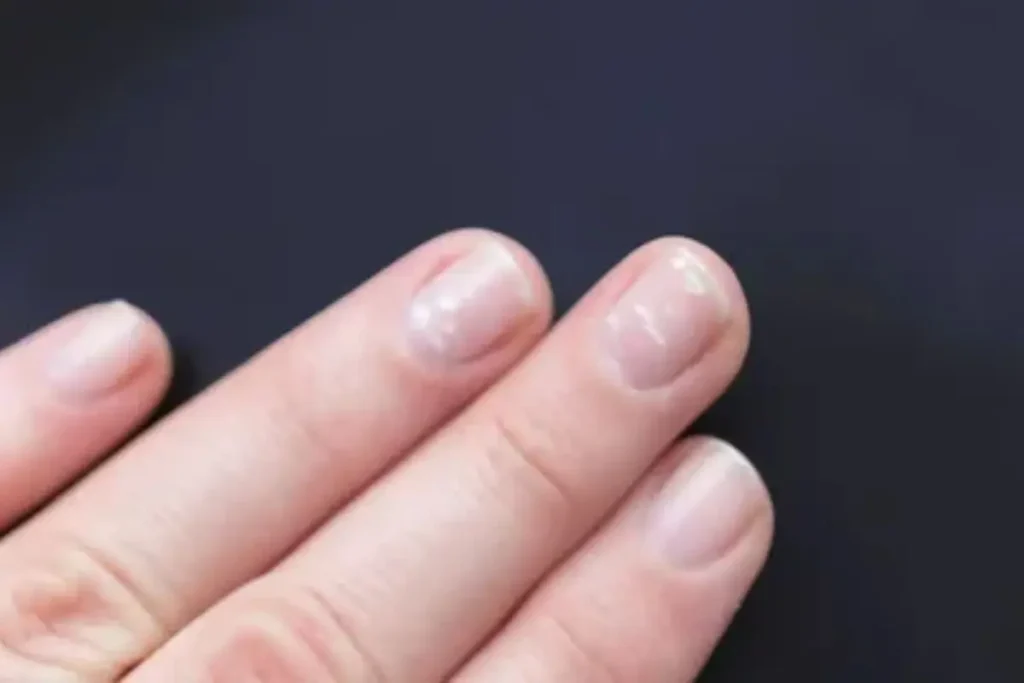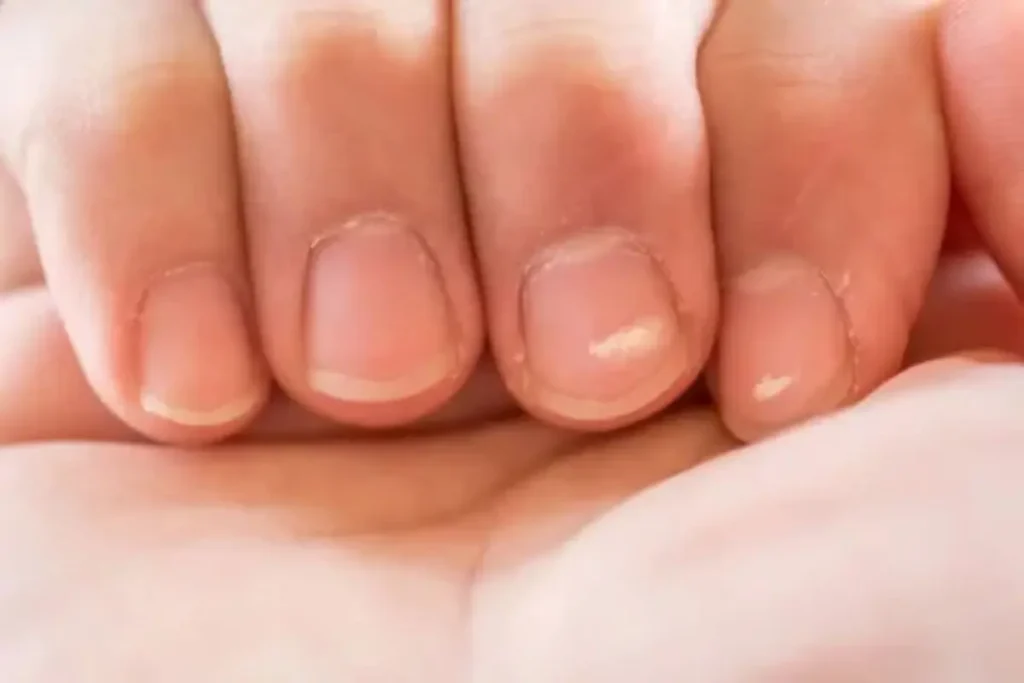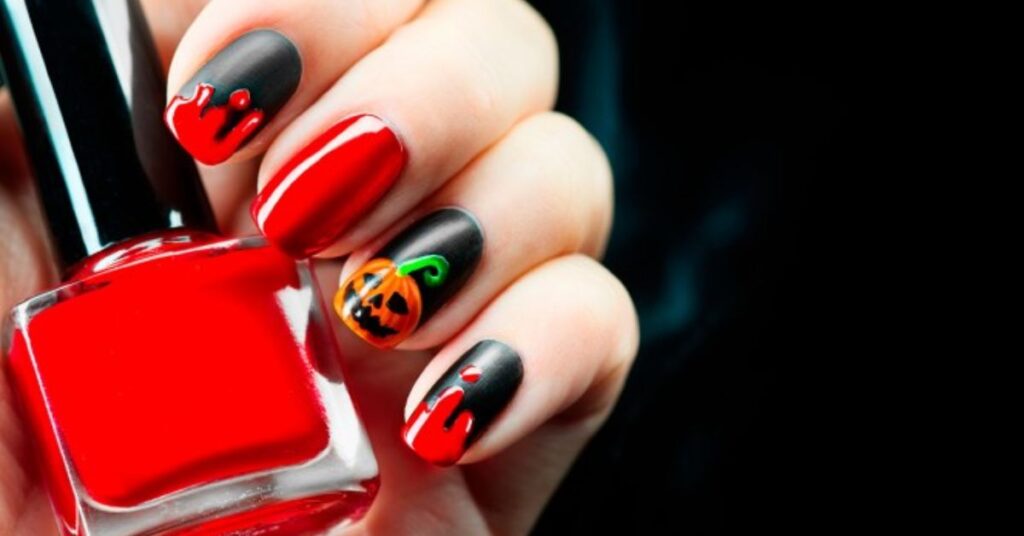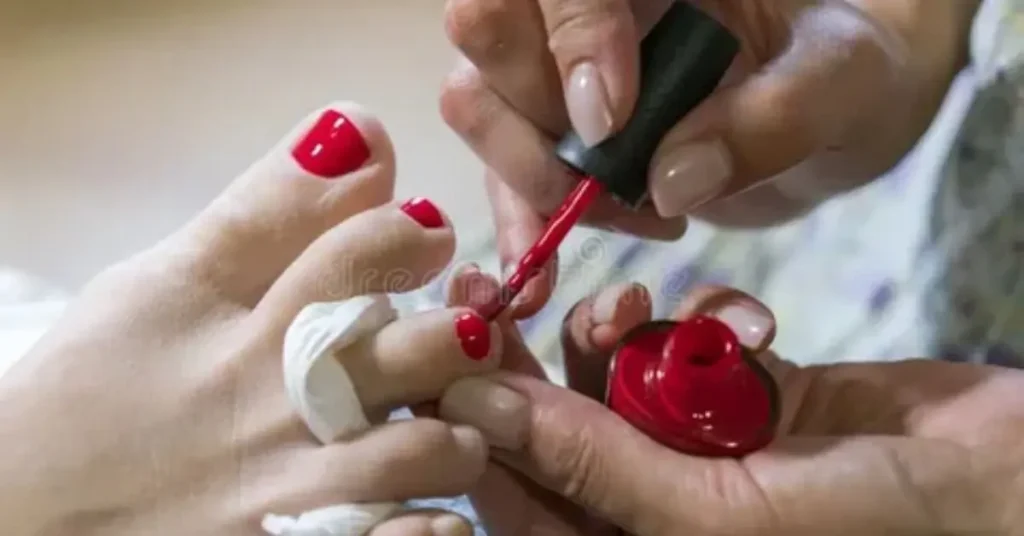White spots occasionally develop on fingernails after removing nail polish. The marks show up unexpectedly causing you to question the source of the problem. White spots or patches can be found along the nail surface as tiny dots. The appearance of these marks by themselves does not indicate a serious problem but shows your nails require attention.
People usually mistake these spots for leftover polish residues even though they stem from additional sources. The end products of your nail routine may work against you potentially leading to grave nail damage even when you are unaware. The combination of abrasive removers and missed base coats produces major adverse effects for your nails despite their small nature. The article will reveal possible nail-damaging elements.
In this article, we’ll explore the common reasons for white spots after nail polish and how you can prevent them in the future. Users who prefer their nails with polish or want beautiful manicures need to read this guide. Follow the points in this article to safeguard your nails and maintain their overall health.
What Are White Spots on Nails?

White spots on nails take the form of tiny pale marks which develop on the nail surface. White or cloudy spots on nails appear as either dotted or linear markings. The appearance of these spots on the nails typically causes no harm and will naturally disappear. Nail discolorations occasionally indicate damage to the nails but might also stem from different health problems.
Is It Normal to See White Marks After Removing Nail Polish?

White marks on your nails after applying nail polish removal is common. These spots normally do not represent any serious medical concern. White marks on the nails occur because of dryness and minor damage or from remaining of different types of nail polish residue. It is necessary to consult a doctor when white marks on nails persist or become worse.
Common Reasons and treatment for White Spots After Nail Polish
Here are some common causes of white marks after nail remover.
Keratin granulations
Keratin granulations frequently cause white spots to appear on nails after removing nail polish. The dryness and roughness of the nail surface leads to the formation of these spots. The appearance of white spots develops when people maintain constant nail polish for trendy look and use without providing their nails with any rest period. The nail surface becomes vulnerable when exposed to strong chemicals found in both polish and removers.
Treatment
A few weeks without nail polish treatment helps to resolve keratin granulations. Use hand cream or oil products to maintain proper hydration of the nails. Use gentle motions to smooth down the nail surface without going overboard. A nutritious diet supports the growth of nails which become both strong and clear.
Onycholysis
Onycholysis occurs when the nail detaches from its base. The condition results in white areas or sections that appear on the nail surface. The main factor behind this issue stems from excessive use of harsh nail polish or remover. Long periods of wearing nail polish can lead to damage of the nail surface.
Treatment
Allow your nails to rest without any polish application. Your nails should remain both clean and dry. Apply daily moisturizing cream or nail oil to your nails. A dermatologist should be consulted when the condition persists.
Excessive use of Harsh Nail Polish Removers
Excessive use of harsh nail polish removers will harm the condition of your nails. Acetone and similar strong chemicals are present in these nail polish removers. Nails become dehydrated because nail polish removers strip away their natural oils. The result of frequent exposure to harsh nail polish removers is white spots along with weak and brittle nails.
Treatment
Allow your nails to be free from polish for a few days. Regular application of moisturizing creams together with nail oils should be part of your daily routine. Use acetone-free removers as your future choice for nail polish removal. A nutritious diet will help strengthen your nails.
Repeated Nail Polish Application Without Breaks
The continuous application of nail polish without proper nail rest periods may result in white spots forming on the fingernails. The lack of air exposure and moisture leads to the formation of white spots on the nails. The continuous application of polish along with rough removers weakens the surface of nails. The damage weakens nails and causes them to become dry while developing spots.
Treatment
Nails should receive a period without polish for proper treatment of white spots. Natural oils or creams should be used to keep nails clean and moisturized. A gentle nail buffer should be used to smooth the surface of affected nails. A balanced diet serves as an essential factor for maintaining healthy nails.
Injuries (trauma)
Accidents and forceful contact with the body result in injuries(trauma). Injuries develop from falls and car accidents together with sports-related incidents. The most typical injuries consist of cuts together with bruises and broken bones. Injuries range from light to severe in their nature.
Treatment
The required treatment depends on the severity of the injury. The treatment for small wounds includes cleaning them before applying a bandage. Medical professionals usually require casts or splints to treat broken bones. Hospitalization together with surgical procedures becomes necessary to treat serious injuries.
Poisoning and medications
A person becomes poisoned after taking the wrong medication or consuming excessive amounts. A child swallowing a drug by accident leads to poisoning. The combination of incompatible medications results in poisoning for certain individuals. Medicines that are past their expiration date or old will cause harm to patients.
Treatment
The first step for treating poisoning requires immediate action followed by an emergency call to medical services. Only administer vomiting instructions to a person if a doctor specifically instructs it. Provide fresh air to the patient while maintaining their emotional stability. You should always bring the medicine bottle to the hospital for immediate assistance.
Systemic diseases
Systemic diseases refer to medical conditions which impact every part of the human body. These conditions emerge from issues within the immune system or infections and inherited disorders. Three well-known systemic diseases are diabetes, lupus, and rheumatoid arthritis. Such diseases simultaneously target multiple organs throughout the body.
Treatment
The treatment approach depends on which systemic disease affects the patient. Doctors prescribe medication which helps control symptoms together with inflammatory reduction. Following a healthy lifestyle helps patients better control their diseases. Patients should schedule periodic medical examinations because they help prevent significant health complications.
Hereditary conditions

The appearance of white spots on nails is a result of hereditary conditions which doctors call leukonychia. Genetic factors that control nail growth lead to the development of white spots on nails. Some inherited conditions which parents transmit to their children result in harmless white nail spots. White spots on the nails could signal health problems that stem from hereditary factors.
Treatment
The treatment of hereditary white spots on nails does not require medical intervention because these spots tend to disappear independently. The persistence of white spots requires a diet that includes vitamins and minerals to help with the condition. Supplements or additional tests might be suggested by doctors in very few instances. Nails require regular moisturization to reduce additional harm while avoiding exposure to strong chemicals.
Allergic Reaction to Nail Products
Nails develop white spots when a person has an allergic reaction to nail products including polish and gel. When the nail bed becomes irritated by formaldehyde or toluene chemicals it results in white spots. The nails of some people may experience redness or swelling in addition to itching and white spots. Read the product labels before buying to detect ingredients that might harm your nails.
Treatment
Discontinuing use of the product that triggered the reaction will help treat this condition. The application of a mild moisturizer will help reduce skin discomfort. Medical attention is needed when symptoms intensify so you can receive antihistamines or steroid cream from a doctor. The use of hypoallergenic and “5-free” nail polishes helps prevent white spots from developing.
Arsenic poisoning
Nails develop white spots after polish removal because of either nail plate damage or minor injuries. White spots on nails develop when the body reacts negatively to harsh chemicals found in nail products such as formaldehyde. The spots develop when nails become weak because of improper nail polish removal or excessive filing. Fungal infections together with nutrient deficiencies represent very rare causes of white spots on the nails.
Treatment
Nails should be moisturized while avoiding additional damage through the use of delicate nail care products to treat white spots. It is best to select non-acetone removers and allow your nails occasional breaks from polish. Antifungal medications can treat white spots that result from fungal infections. The prevention of white spots requires both a balanced diet and a protective base coat application before nail polish use.
Nutritional Deficiencies

The appearance of white spots on nails called leukonychia may result from nutritional deficiencies. Inadequate dietary intake of zinc together with calcium and protein can produce these nail spots. Insufficient consumption of vitamins and minerals leads to poor nail health. Nail damage from rough chemicals or physical trauma will worsen the condition.
Treatment
The treatment for white spots from nutritional deficiencies requires a diet with balanced vitamins and minerals. Zinc and calcium can be found in nuts together with dairy products and leafy greens. Consult a doctor before taking supplements as needed. Regular moisturization of nails alongside the avoidance of chemical products helps the healing process.
Fungal Infections
Nails develop white spots after polish application due to fungal infections. Fungal organisms prefer moist and warm conditions which they find under nail polish. The risk for such infections increases when nails become unclean or sustain any form of damage. The substances found in nail polish can cause allergies which sometimes result in infections.
Treatment
Maintaining nails both clean and dry will stop fungal development. Antifungal creams together with oral medications should be used for treatment. You should postpone wearing nail polish until your infection completely heals. High-quality breathable nail polishes should be selected to decrease the likelihood of future risks.
Tips to Prevent White Spots on Nails
- Apply minimal nail polish while occasionally allowing your nails to rest without polish.
- The first step when applying nail polish is to use a base coat which shields nails from staining and damage.
- Non-toxic nail products should be your choice to prevent skin irritation.
- Oil or cream application serves as an essential part of nails and cuticles regular care.
- A diet containing moderate amounts of biotin, zinc and vitamins should be maintained for nails to stay strong. Regular implementation of these methods preserves nails without developing spots.
FAQs
How to get rid of white spots on nails from nail polish?
To eliminate white spots on your nails use a gentle nail surface buffer followed by application of hydrating oil or Vaseline.
What is the white stuff on my nails after removing polish?
When you take off your nail polish you might discover white and dry sections on your nails which indicates this common nail issue. Long-term nail polish usage results in this condition. You should allow your nails to rest when you have this condition.
Why do my nails turn white after polishing?
The drying out of surface nail cells produces white rough and uneven dry areas on the nail’s top surface which medical professionals call keratin granulations. Keratin granulations develop on toenails because both long-term nail polish application and acetone-based nail polish removers cause nail surface dehydration.
How do you get white residue off nail polish?
You can remove white residue from nail polish by using either a soft file to buff your nails or applying a little rubbing alcohol on a cotton pad. Apply moisturizer right after to maintain nail hydration and protect the nails from additional harm.
Do white spots on nails go away?
The majority of white nail spots will naturally extend until they reach the nail tip so you can remove them through trimming or cutting. White spots on nails might indicate a severe medical problem though such occurrences remain uncommon.1
Conclusion
Nails develop white spots after nail polish removal which typically represent no health risk yet remain irritating to the eye. Nails develop white spots due to dehydration along with harsh products and small damage to the nails. Knowing the causes enables you to establish preventive measures that will protect your nail health.
The prevention of white spots requires using a base coat and maintaining regular moisturization. Use mild nail products while allowing your nails time without polish application. Taking proper care enables you to achieve effortless maintenance of your strong nails without spots.






